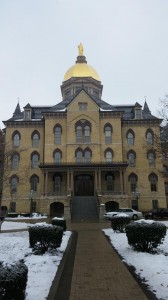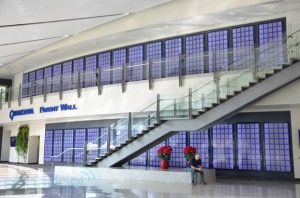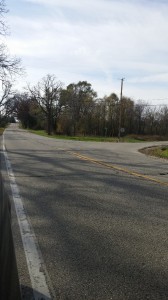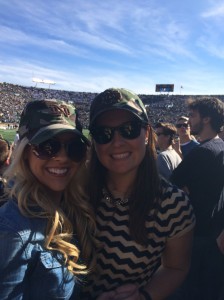A post from our student blogger Catie
A few weeks ago, we had the privilege of listening to a presentation by Louis Fogel, who is a patent litigator at Jenner and Block law firm. As a resident of the Evanston, IL area, Louis was our lunch-and-learn guest for the Notre Dame vs Northwestern football weekend. Louis did patent prosecution for a while between graduating from law school and strictly becoming a patent litigator, which means that he has experience from both sides of being a patent agent. Speaking with him was a great opportunity for the MSPL students because of his multi-faceted perspective and experience in patent law. During his presentation, he gave us a few ‘do’s and don’ts’ that he has come to know over his years in the field of intellectual property.
DO:
Perform a prior art search and disclose it. This point has been hammered into our heads all semester; we even take a class that solely teaches search strategies for patent prior art! Technically, the USPTO does not require a patent search prior to filing a patent application. However, a prior art search shows you what technology and inventions already exist, so that you are not wasting your time in trying to patent an existing idea! What you find in the prior art search may also be useful in proving how your invention is better. Whether good or bad, it is also pivotally important to disclose the prior art that you found. Trying to hide pertinent prior art from the USPTO in your patent application will only come back to haunt you in either prosecution or litigation, and could potentially prevent you from receiving a patent, or even cause revocation of your patent agent/attorney registration!
Include multiple claims in multiple scopes. This is a point that has been emphasized in our drafting course. It is important to present an invention in a patent application in both broad and narrow scopes. The narrow scope, also called the picture claim, often exactly describes the invention itself, more or less for clarity concerning the preferred embodiment. However, narrow claims will not be incredibly helpful when trying to prevent others from inventing a practically identical or analogous product or method. Presenting the claims in varying scope will provide a more thorough understanding of the invention and its boundary lines to be presented in the patent.
DON’T:
Refer to your invention simply as ‘the invention’. As a blogger’s note: Yes, I have said ‘the invention’ numerous times in this post, so let me provide an alibi for myself. We have been told over and over all semester that it is incredibly important not to refer to your invention as ‘the invention’ and to avoid using the term ‘invention’ at all! I use the term ‘invention’ in this post as a general term to convey the concept of the idea that is to be patented. However, in a patent application, it is best to simply state what the invention is, or say ‘an embodiment of the invention’. For example, if your invention is a motion-transmitting cable assembly, then say ‘an embodiment of the motion-transmitting cable assembly’. This promotes broader interpretation of the object or method to be patented and avoids limiting what you may claim!
Say what the prior art discloses in plain language. As Louis explained in the presentation, it is not in your best interest to directly make statements in the patent application such as ‘the reference teaches that’ and include the exact disclosures of the patent or publication. This is because such a statement will often be considered an admission that the prior art successfully executes that intended purpose, which may negate the supporting arguments for the granting of your patent. After the patent application has been submitted, statements such as those cannot be retracted, so it is best to stay on the safe side and avoid those kinds of admissions!
As evident of these patent law pro-tips, drafting a patent application is quite complex and requires plenty of attention to details. As the MSPL students have learned over this first semester, patent prosecution is no easy task, and the quality of work presented in patent prosecution will determine the level of difficulty of work left for a patent litigator. Learning the do’s and don’ts of patent law are exactly why we’re here earning a Master’s degree in the subject!




